Word count.
It’s a topic that receives a lot of coverage these days.
Bloggers and content marketers are always wondering what’s the ideal word count to shoot for.
Should every single piece be long form, or is it better to opt for shorter pieces?
It’s a valid question and something that I have researched extensively.
The purpose of this post is to shed light on just how long your blog articles should be.
There’s one thing I always want to make clear regarding word count.
It only matters if the content is good.
Word count is not a standalone ranking factor. Word count only has merit if the content quality is high!
You can produce a 10,000-word article. But if the content and quality suck, then the article doesn’t deserve to get ranked. You lose.
Is word count important?
Yes, it is, and that’s why I write about it often.
But word count is only important when coupled with super high quality.
I work with clients in virtually every vertical. Whenever I enter a new industry, my team and I conduct thorough research to find out everything we can about top-notch content within that industry.
Then, we begin to engage in content marketing while constantly looking at our data. We track engagement metrics, rankings, CTRs, social shares, etc.
After a while, a story emerges from the data. We are able to find out what kind of content ranks the best, and how long they should be.
I’m basing the following word counts off of that research and experience.
Allow me to begin with a brief history of the word count all the way up to where it’s at today.
The evolution of the ideal word count
I remember when not that long ago the average blog post was usually somewhere between 500 and 800 words.
Sometimes even shorter.
Take for instance Seth Godin’s blog.
He’s known for extremely short posts that are often under 200 words.
And he gets crazy shares because, well, he’s Seth Godin.
But this definitely isn’t the norm.
Unless you’ve been living under a rock for the past couple of years, you know that long-form content reigns supreme.
There have been several studies performed that prove this to be true.
Take for instance one study that analyzed articles to determine the correlation between social shares and content length.
Here’s what they found.
According to their findings, “3,000 – 10,000-word content gets the most shares.”
Another study from SerpIQ concurred.
However, their findings were a bit different and found that just over 2,450 words was the sweet spot.
In September of 2016, Backlinko released their own research that found that the ideal word count had dropped a little bit, and “the average word count of a Google first page result was 1,890 words.”
Although the ideal word count of each of these three studies varies, it’s still obvious that long form is best.
And I really doubt that this is going to change anytime soon.
The psychology behind long-form content
Here’s my take on why long-form content is so successful.
First of all, it covers a topic with a level of depth that’s simply impossible with a shorter post.
Therefore, long form creates a perception of higher quality.
Second, it’s perfect for scanning.
See, most people don’t read content word for word.
They simply scan.
In fact, Nielsen suspects that visitors only read somewhere around 20 percent of an article.
Here’s a chart that “shows the maximum amount of text users could read during an average visit to pages with different word counts.”
As you can see, seldom do visitors read a long-form post in its entirety.
Instead, what they do is scan and check out headers, sub-titles, and bullet points as well as look at the images.
Third, I feel like creating content with a high word count leaves readers feeling like they’ve just read something epic when they leave.
There’s a certain sense of satisfaction that thin, short content just can’t provide.
I know that I often find myself immediately backing out of short posts under 500 words, especially if they lack images or headers.
I just feel like it has no real value to offer.
So that’s why I only create long-form content these days.
And you know what?
It’s totally worked for me.
Here are the Google results for “content marketing guide.”
If you’ll notice, my two sites, NeilPatel.com and Quick Sprout rank #1 and #2 for this keyword phrase.
And a big reason is because of the length and level of detail that I go into.
So the bottom line here is that your average, run of the mill, 500 – 800 blog post used to be totally sufficient.
But things have changed dramatically.
Now it’s hard to gain any real traction without going long form (at least in most industries).
But the question is, just how long should your blog articles be?
Of course, they need to be “long,” but how long?
I’ve fielded this question so often that this article provides some suggested word count ranges for each industry.
Following these suggestions should help you find the sweet spot so that you can get more shares, higher rankings, and better engagement among your readers.
But don’t forget — quality remains paramount, not word count alone.
FinTech 2,000 – 2,150 words
Financial technology or (FinTech) is a growing industry, and “global investment increased more than twelvefold from $930 million in 2008 to more than $12 billion in 2014.”
The topics are fairly complex and therefore require substantial depth to adequately cover.
Shooting for around 2,000 – 2,250 words should be just about perfect for scratching your readers’ itch.
Faisal Khan has one of the most influential Fintech blogs.
One of his recent articles, “MoneyGram! Who will buy it?” clocks in at 2,173 words.
This is an ideal length for explaining an issue in depth.
Images are important for pretty much all content. Khan’s blog, mentioned above, includes images, graphs, charts, and other information to maintain thoroughness and visual appeal.
But I would really make it a point to include a significant amount of data-driven images like graphs and charts in FinTech content.
This chart that Khan used in his article provides a wealth of information.
This should help readers connect the dots and understand industry trends and patterns.
Finance – 2,100 – 2,500 words
According to Snap Agency, content that received the most social shares was over 2,500 words on average throughout 2016.
When it comes to the largest volume of organic traffic, the ideal word count was 2,250 – 2,500.
2,100 – 2,500 words is a solid number to aim for if you’re in the finance industry.
Now you may have come across this Viperchill article that mentions that the average post length of the top five blogs in the finance industry was only 1,225.
But here’s the thing.
This was from back in 2010 when 500 – 800 words was considered the norm.
And as you can see, finance is on the longer end of the spectrum.
My logic and experience show that you should go pretty friggin’ long with content in the finance industry.
I keep up with TheMotleyFool, a top finance site.
Some of their news articles are shorter. But their feature pieces and interviews often top 3,000 words.
You’ll definitely want to cover your topics exhaustively and leave no stone unturned.
Again, plenty of data-driven images should be your ticket to improving the reader’s experience and getting your point across.
Here’s a good example.
Manufacturing – 1,700 – 1,900 words
The manufacturing industry is huge.
A Google search generated 795 million results.
And the term “manufacturing” can cover a ridiculous number of topics.
There’s everything from chemicals and textiles to machines and heavy equipment.
So there’s likely to be some disparity in terms of what word count is ideal.
But as a collective whole, 1,700 – 1,900 is a safe number.
Why? Much of the manufacturing industry, especially industrial manufacturing, does not engage in a high level of content marketing.
Sales partners are often fixed, and B2B relationships remain relatively tight-knit, which leads to a slower-than-average uptake of content marketing trends.
A manufacturing business that blogs relevant content with right keywords is going to experience high rankings.
1,700 – 1,900 allows you to cover your topic in depth without going overboard with extraneous information.
Sales – 2,500 – 2,700 words
The sales industry is another one that’s quite robust.
It’s a wide umbrella that encompasses many different areas.
If you look at most of the successful posts in this industry, it’s pretty evident that they hit a high word count.
I also see a lot of whitepapers and in-depth PDFs that tackle subjects at length.
There are also a lot of scholarly articles that you have to compete with.
The longer the word count the better in the sales industry.
Retail – 1,500 – 1,700 words
This has always been a staple industry in the United States.
Whether it’s massive chains or your small mom-and-pop store down the street, retail drives the U.S. economy.
Online retailing in particular has seen massive growth in recent years.
And just like manufacturing, the retail industry is far reaching and can involve a lot of different types of content.
But when you look at the big picture, you can usually explain a product or service sufficiently without an insane word count.
That’s why 1,500 – 1,700 words (or maybe even less) is a good number to aim for.
While images are important across the board, they’re absolutely critical for retail-based articles.
Take for instance this page from Pakayak, which offers a surplus of imagery to explain the concept and how their product works.
Videos are great as well, especially when the benefits of a particular product aren’t immediately obvious.
Real estate – 1,800 – 1,900 words
Ah…real estate.
It’s the industry where so many people have made their millions (and billions).
According to Fortune Magazine, global real estate is worth a mind-boggling $217 trillion!
That’s with a “T.”
So this makes it an incredibly competitive industry.
By entering “real estate blogs” in Google search, I instantly got 85,600,000 results.
This means you’re going to have to be on top of your game to stand out and pull in traffic.
You’re also going to want to specialize in a few key areas and be able to provide your audience with expert advice.
After all, you’re up against juggernauts like Trulia, Zillow, and House Logic who have deep pockets and a team of dedicated writers.
Just look at the massive archive of content readers can find on Zillow’s blog.
But if you consistently create beefy content that clocks in somewhere around 1,800 words, you should be able to capture your piece of the pie.
Mastering Local SEO will help you loads when it comes to content marketing for real estate.
Home and garden – 1,100 – 1,200 words
You’re probably wondering why the ideal word count for this industry is considerably lower than the rest.
Well, it’s simple.
These types of post tend to be more visual-centric and use a ton of pictures and videos rather than an insanely high word count.
For example, there’s a lot of DIY type stuff that provides readers with instructions on how to complete a project.
Here’s a good example from HGTV.
After looking at several home and garden articles, it’s apparent that hitting 2,000 plus words isn’t usually necessary.
What’s more important is being incredibly detailed and walking readers through a project step-by-step to eliminate any confusion.
That’s why video works a lot better than written content in this industry.
Tech – 800 – 1,000 words
Tech is like home and garden terms of content being best with a lower word count and plenty of images.
Much of the top tech blogs are news sites, which lend themselves to AMP-loading content and easy-to-digest blurbs.
If you look at most of the content on TechCrunch, you’ll notice that most of the articles are not long-winded manifestos.
It’s fairly short commentary on a product, technology developments, or events.
Wired Magazine tends to delve a little deeper, but most of their content doesn’t exceed 1,200 words.
So I would say that 1,000 words is a reasonable word count in the tech industry.
Gadgets – 300 – 500 words
This word count may seem incredibly low considering how much I talked about long-form content.
But you have to remember that there are always exceptions.
Just think about it.
Do you really need to drone on for 2,000 words about a new gadget?
Probably not.
Just cover the background, its key features, some nice images, pricing, etc. and you’re good to go.
It’s simply a matter of being practical.
Engadget is one of the top gadget sites. Here’s an article from their front page:
It’s a standard Endgaget length — 322 words.
You want to cover a product with at least some level of depth and give readers a clear idea of what they can expect if they purchased it.
So 500(ish) words with a handful of pictures is a good formula to follow for gadgets.
Marketing/advertising – 2,500 – 3,000 words
This industry I know like the back of my hand.
I can say with certainty that in-depth, long-form content is the way to go here.
If you look at some of the top online marketing blogs like Moz, HubSpot, Backlinko, and even my blog NeilPatel.com, you’ll notice that long-form content is king.
In fact, I always try to hit at least 2,500 words per article on this blog.
Sometimes I even go higher than 4k.
Quick Sprout is a bit lower, but it still exceeds many of my competitors in length.
Virtually everyone in marketing engages in content marketing, which means a whole lot of content.
Dishing out value with higher-than-average word counts will help you stand above the crowd.
Healthcare – 2,000 – 2,150 words
This is another megalithic industry that generated over $1.6 trillion in 2016.
Here are a few stats from Statistic Brain that offer a glimpse into the healthcare industry.
It’s huge!
If you’re blogging on health-related topics, you’re up against some sizable competition.
Not only are there major publications like The New York Times and CNBC, you’ve also got countless scholarly articles featuring original research from top universities.
So it’s pretty stacked.
In order to get your content noticed and shared, you really want to create top-level articles that are jam packed with valuable data.
As a result, a 2,000-2,150 word count range is suggested.
Fashion – 800 – 950 words
Like tech and gadgets, there’s usually no need to go hog wild with fashion content.
One study even found that the optimal length for fashion articles was only 669 words.
Whether you’re discussing fashion trends, style, or industry models, this should allow you to adequately cover the topic without having extraneous information.
And this should go without saying, but be sure to include plenty of images.
Recruiting – 900 – 1,000 words
This is a multi-billion dollar industry where sales reached $147 billion in 2015.
Most of the recruiting content that I’ve read is fairly stat heavy but isn’t exceptionally long.
In fact, many topics can be adequately covered with just under 900 – 1,000 words.
However, if you’re using a lot of original research and covering a unique area of recruiting, you’ll probably want to go longer and be closer to 1,200 words.
Food – 1,400 – 1,900 words
Here’s another massive industry.
According to Statista, the total retail and food services sales in the U.S. were $5.32 trillion in 2015.
This means there’s a whole lot of people writing about the food industry.
And the number of food blogs has really grown as well.
The foodie scene is huge these days.
When it comes to word count, you should be aiming at the 1,400-1,900 mark.
Here’s an article from another authoritative healthy eating site, Dr. Axe. It’s 1,416 words long.
Just be sure that you’re including beautiful images to make that instant connection with readers.
Travel – 1,500 – 1,850 words
I like to check in on a few travel blogs from time to time.
Nomadic Matt and The Blonde Abroad are a couple of my favorites.
If this is your niche, you probably know that long-form, in-depth content is key.
In particular, Nomadic Matt goes long with his content.
Even this graph from return.co places the average word count of the travel sector pretty high.
Hitting around 1,850 words should enable you to cover a topic like a travel destination, tips, useful gadgets, etc. in its entirety.
Film – 1,500 – 1,700 words
The film industry is always growing.
In 2016, just under 1.2 billion movie tickets were sold in the U.S. alone.
Here’s a quick snapshot of what the film industry looks like as a whole.
If you’re writing about the film industry and movies, you’re up against some stiff competition like The Guardian and The L.A. Times just to name a few.
To stand out, you’re going to want to create meaty, long-form posts somewhere in the neighborhood of 1,500 – 1,700 words.
Conclusion
There’s no be-all end-all resource that says “using X amount of words is guaranteed to propel your content to number one in search engine rankings and earn you thousands of social shares.”
Of course, there are numerous variables that determine how successful your blog articles are.
And as I’ve pointed out in a Quick Sprout article, it’s not all about length.
Here are some other factors that I mention.
But when it’s all said and done, length is pretty darn important.
If you want proof, just cruise through a few of the top articles for a random search.
I really doubt you’ll come across very many short, thinly-written posts.
You’re far more likely to see robust, comprehensive content that really covers a topic in detail.
Aiming for the word counts I’ve mentioned should provide you with a general baseline so you’ll know roughly what the length of your average article should be.
That way you’ll be better positioned to receive more social shares, links and so on that will help propel you to the top.
What word count do you usually shoot for with your content?



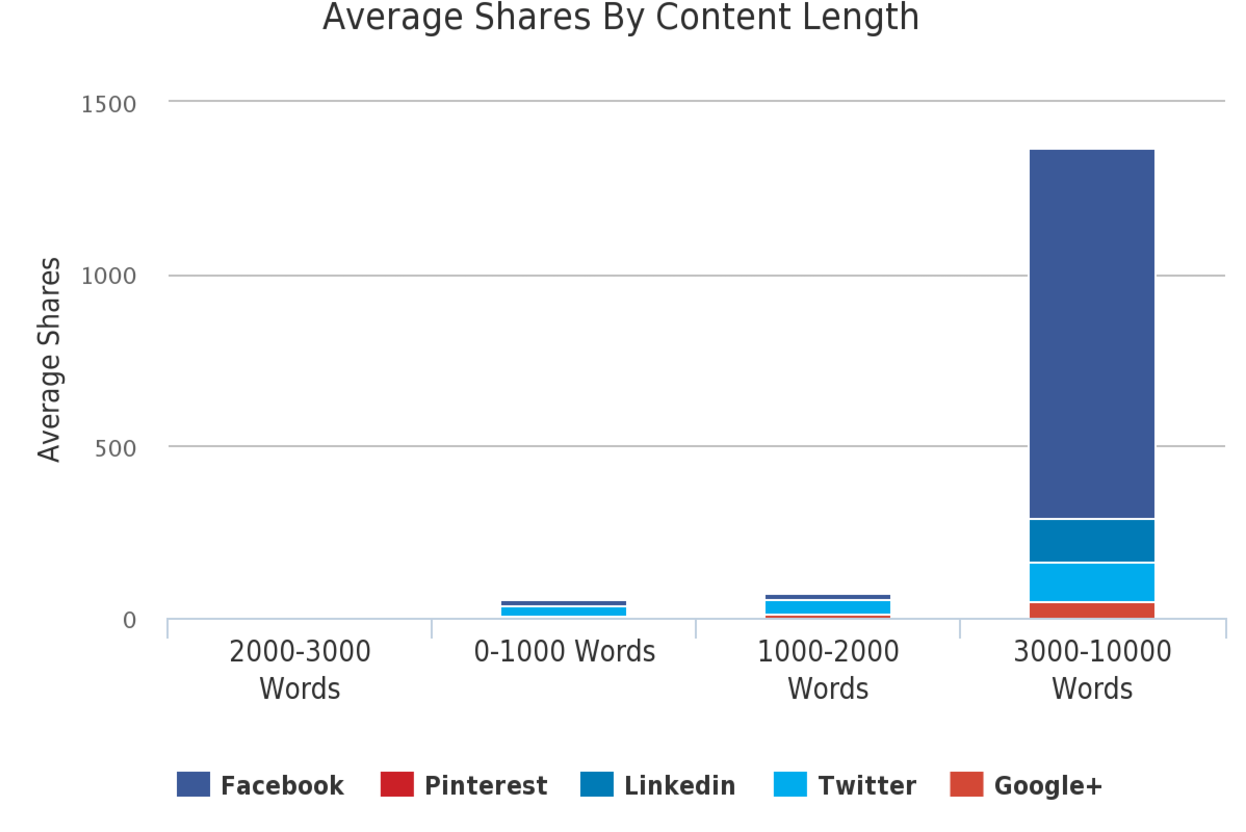


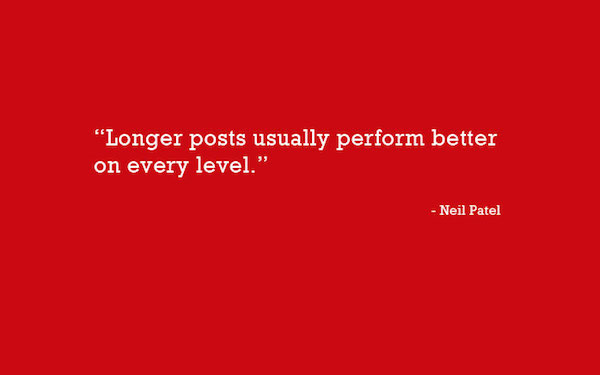


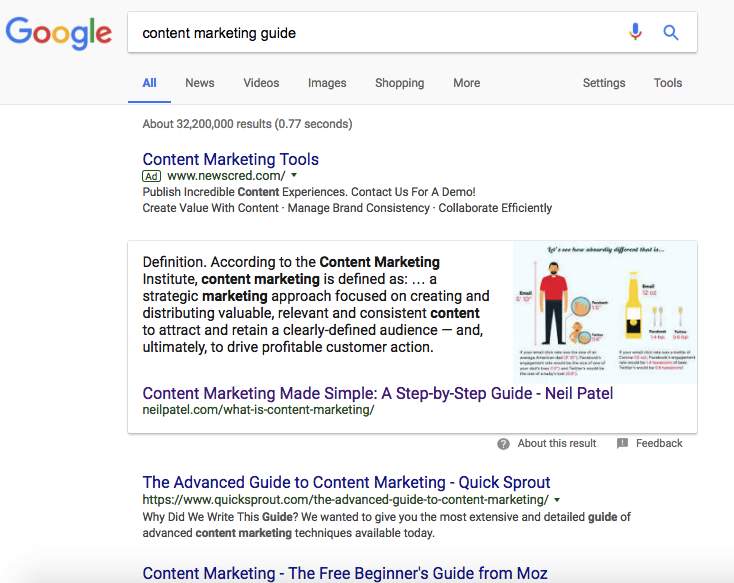


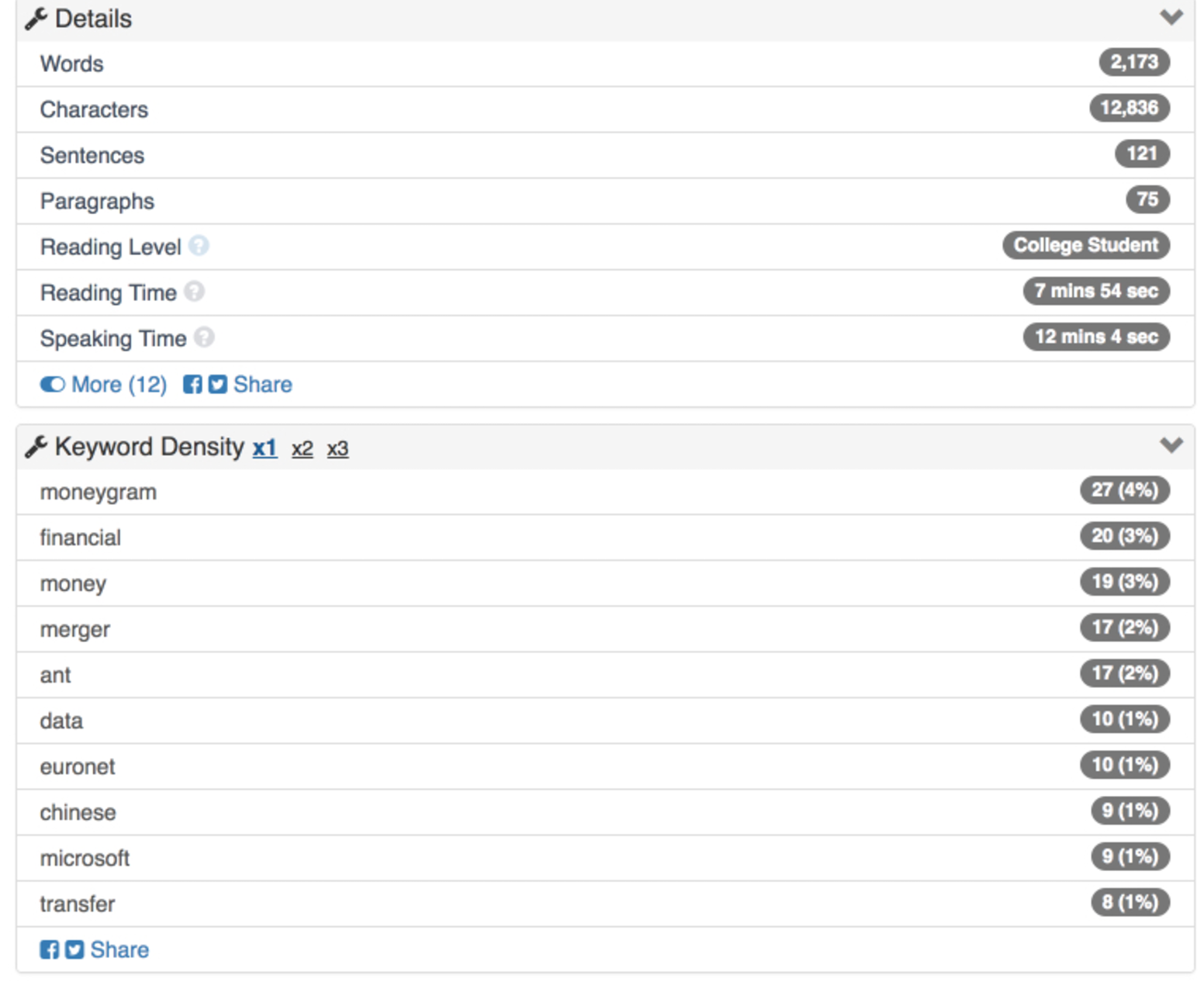
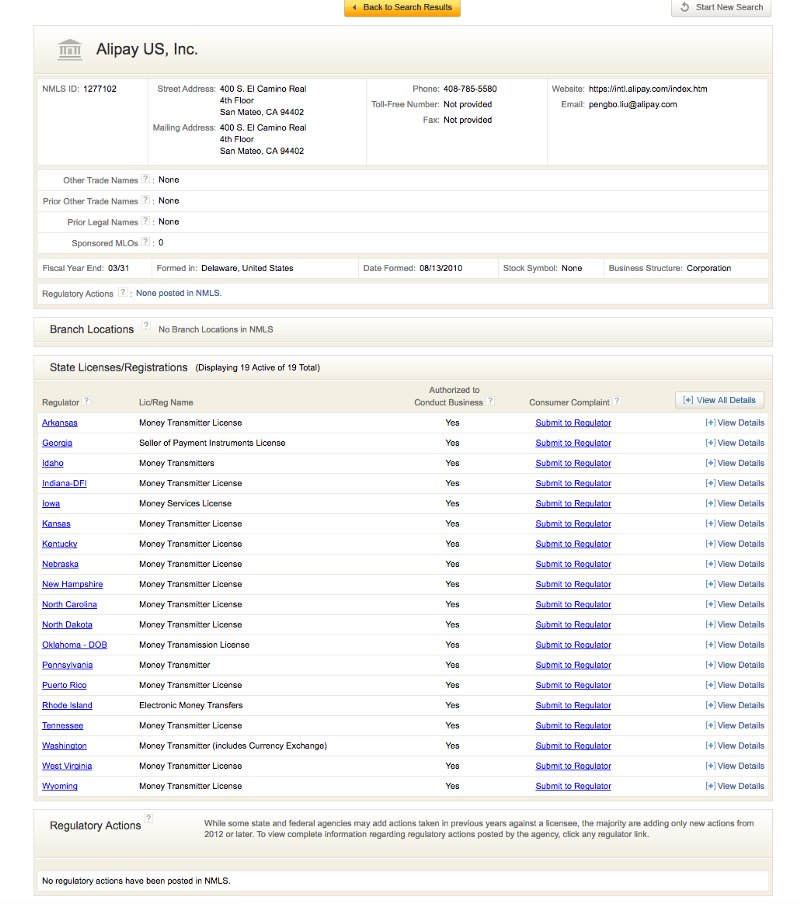
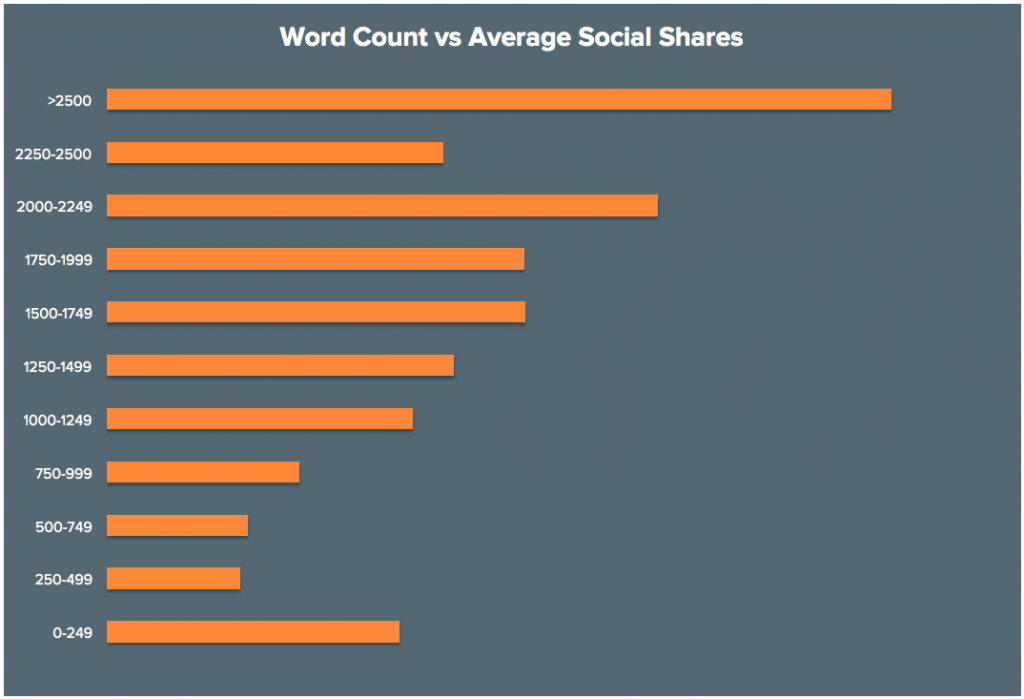

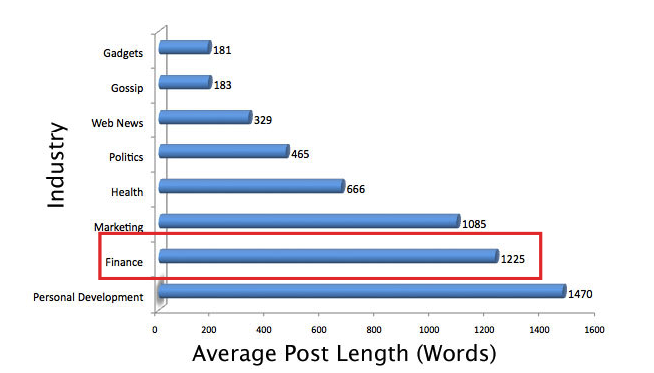











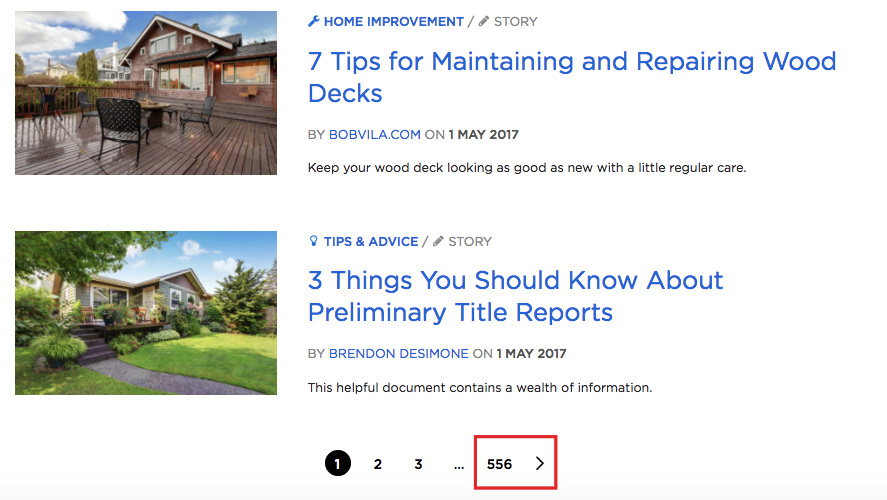






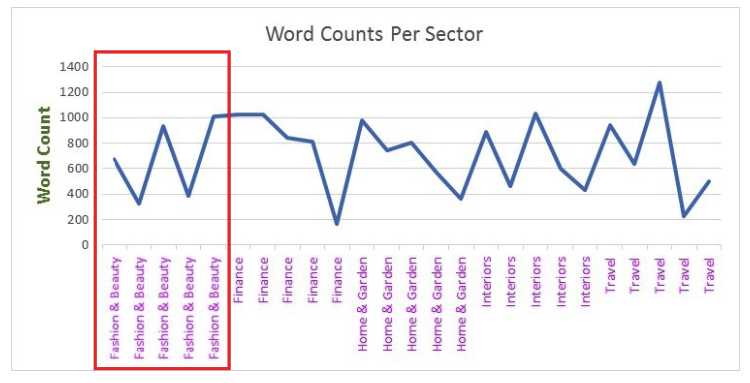







Comments (210)